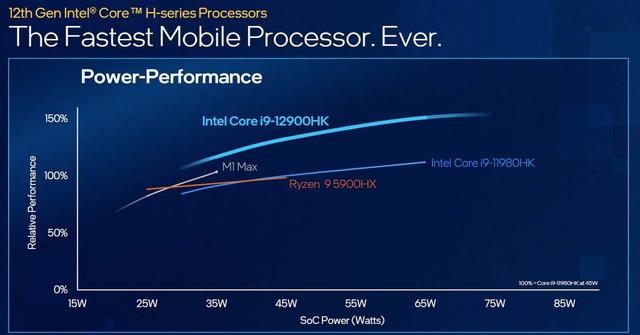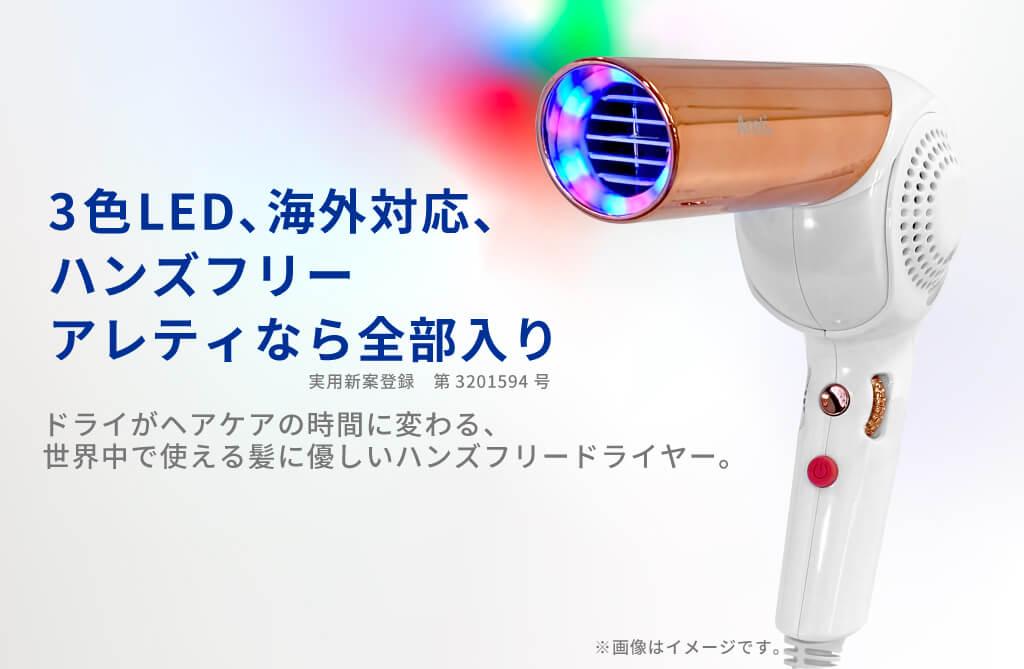Maybe resurrection? Intel 12th generation Core seems to be super high performance comparable to M1 and Ryzen #CES2022
I pulled out the key person who was responsible for Apple's de-Intel (Intel), and will it be a comeback?
Intel announced the 12th generation Intel Core mobile processor (Alder Lake) at CES to compete with Apple M1 and AMD Ryzen. All-out focus on the H series for high-performance gaming notebooks! You made an impression!
On the contrary, it's all about H, and the next Alder Lake-P series of CPUs for high-performance ultra-thin notebooks (power consumption 28W), and the U series for power-saving ultra-mobile devices (15W/9W) are smooth. extent to touch. The P and U notebooks have already appeared at CES, but we are waiting for Intel to announce the details.
What is Intel 12th Generation Hybrid Technology?
The 45W H series CPU has the same hybrid layout as the high-end desktop PC that appeared in October last year.
Similar to the Apple M1, the high-performance P core (Golden Cove) and the power-saving E core (Gracemont) are mixed, and the P and E together achieve both high-speed processing and battery life. In the shadows of the large P-cores that perform high-load processing, the smaller E-cores are designed to perform background task processing.
Intel explained using the F1 race car as an example. He said that it would be better to divide it like this rather than stuffing it with a high-performance core that uses up all its power in a guzzle of gasoline. It's like a hybrid car with a turbo engine for maximum speed and electric power for cornering.
Consolidation itself is not a new technology. Even without waiting for Alder Lake to appear, there have been examples of large and small mixed loading in the smartphone industry for many years, and Intel's Lakefield (currently a discon) was also a small hybrid (high performance 1 core + power saving 4 core). However, Lakefield is positioned as a test program for hybrid introduction to x86-64, and only two models, Samsung Galaxy Book S and Lenovo ThinkPad X1 Fold, were adopted, and it was difficult to process basic tasks. By the way, there were also problems such as stumbling.
Intel 12th Generation Alder Lake SKU and Specs
In that respect, the 12th generation uses the new Intel 7 process (10nm SuperFin node), so there is no such problem. Initially, we prepared eight types from Core i5-12450H to Core i9-12900HK. The H series has a maximum of 14 cores (6 P cores + 8 E cores), and the maximum frequency when using turbo boost is 5.0 GHz.
The breakdown of the 8 types of 45W H series is as follows.
| Model number | Number of cores (P core: E core) | Number of threads | L3 cache | >Turbo maximum clock |
|---|---|---|---|---|
| Core i9-12900HK | 14 cores (6P:8E) | 20 | 24MB | 5.0GHz |
| Core i9-12900H | 14 cores (6P:8E) | 20 | 24MB | 5.0GHz |
| Core i7-12800H | 14 cores ( 6P:8E) | 20 | 24MB | 4.8GHz |
| Core i7-12700H | 14 cores (6P:8E) | 20 | 24MB | 4.7GHz |
| Core i7-12650H | 10 cores (6P:4E) | 16 | 24MB | 4.7GHz |
| Core i5-12600H | 12 cores (4P:8E) | 16 | 18MB | 4.5GHz |
| Core i5-12500H | 12 cores (4P:8E) | 16 | 18MB | 4.5GHz |
| Core i5-12450H | 8 cores (4P:4E) | 12 | 12MB | 4.4GHz |
The performance comparison continues below, but the numbers here are Intel internal tested and not validated by Gizmodo.

Chip makers pick and choose to look the best everywhere, so you may have to discount a little, but the 12th generation H series is the fastest mobile processor ever, surpassing Apple's M1 Max. Here is Intel's official statement.
Intel 12th generation vs Apple M1 vs AMD Ryzen
Intel used the top Core i9-12900HK for comparison. I compared with the following terminals.
With Core i9 CPU & RTX 3080 GPU: MSI GE76 Raider
Equipped with M1 Max: MacBook Pro 16
With Ryzen 9 5900HK CPU & RTX 3080: Lenovo Legion
As you can see, the Core i9 wins big.
Both the PugetBench Premiere Pro bench and the PugetBench Lightroom Classic bench can see the competition down. Compared to the previous generation Core i9-11980HK, the performance is improved by 44% and 10% respectively. A 14% performance improvement over the previous generation was also confirmed on the Autodesk Autocad bench.
Since Intel is focusing on the high-performance H series, I'm also curious about gaming notebooks, one of the two product categories driven by H (the other is notebooks for content creators), but this is also Intel's blue The group is doing well, and the gap is widening slightly in the 12th generation.
Games like Assassin's Creed: Valhalla, Gears 5, and GTA V didn't see much of a performance boost, but Hitman 3, League of Legends, and F1 2021 saw a significant improvement. Intel has made great strides since the 11th generation, and has seen speedups of up to 28% in games optimized for Alder Lake. "Hitman 3" also increased FPS by up to 8%.
Well, it's easy to judge a new chip based on its processing performance and power saving performance, but there are other important factors, and what's more important in the notebook PC you're going to buy is what kind of technology the new chip has. Will it come true? For Intel 12th Gen, that equates to Wi-Fi 6E, DDR5 memory, and Thunderbolt 4.
Wi-Fi 6E, DDR5, etc. realized in Intel 12th generation mobile version
Wi-Fi 6 is 2.4GHz band, 5GHz band, extended version Wi-Fi 6E is the third 6GHz The obi is also available in a wider range. The theoretical processing speed is still 9.6 Gbps, but what you can't miss with Wi-Fi 6E is the ability to increase the number of channels (up to 60). In other words, it supports a wider range of bandwidth and capacity, so dozens of connected devices all have fast and stable connections to the router. At least under ideal conditions. A Wi-Fi 6E router is required because a Wi-Fi 6 router cannot be used. What's more, it's ridiculously expensive (from about 60,000 yen), and even if you did get one, the 6GHz band would still have a limited coverage area...
It may be that DDR5, which is scheduled to be installed in a (high-end) notebook PC that will be released in the future, will be able to feel the difference as soon as you buy it. MSI told me they couldn't keep up with demand, but so far it seems that the availability is somehow manageable, and almost all the notebook PCs announced at CES are equipped with DDR5 memory. With DDR5, we can expect performance improvements such as a significant increase in data transfer speed from 4.8 Gbps to 6.5 Gbps (DDR4 has a maximum of 3.2 Gbps), and since power consumption is modest, we can expect a much longer battery life. I will omit the battery life and graphics performance that I care about. When I asked about the former, Intel replied, ``Whether or not the runtime is extended depends on the system, and is not necessarily directly related to the chip.'' Regarding the latter, most H series systems rely on an external graphics board, and it seems likely that some of them will use Intel's high-end graphics Arc, but when these systems are not used for games or 3D simulations, Because it switches to the processing of Iris Xe of the internal GPU.
The 12th generation desktop chip supports PCIe 5, but the mobile version above only supports PCIe Gen 4. When I asked Intel about it, they said that this was for cost reduction. It seems that one of the reasons is that it is difficult to obtain PCIe Gen 5 for confirmation.
The new Intel Evo program promotes the Rimowa function
The Intel U series, which has been limited to ultra-compact notebooks, has expanded to include high-performance notebook PCs in the Intel Evo program. increase. If you're looking at a Windows PC, you'll often see an "Evo" sticker on the palm rest, which is a sign that it has passed Intel's standards (processing performance, battery life, latest features). Along with the announcement of the 12th generation chip, the standard has also been renewed.
As you can see, the 2nd version of Evo focused on portability, while the 3rd version clearly sets the bar for collaboration. The right side is the new standard of specifications, and it is quite specific, such as Wi-Fi 6E support, Intel's AI technology that suppresses background noise during video chat, high-quality microphone and full HD (1080p) webcam. There are also things. However, Intel said that it may not be possible to install a full HD camera due to design issues (such as the bezel is extremely thin), so it does not apply to all systems, so the requirements for Evo are It seems quite fluid.
The new Evo program was designed with the folding screen in mind. At the moment, the only applicable product is the Lenovo ThinkPad X1 Fold, but you can see that Intel thinks there will be more.
What's next?
At CES 2022, many notebooks with Intel 12th generation chips that will be released soon were announced. We should be able to test the performance of the H-series chips against the Apple M-series and AMD Ryzen as soon as the review units arrive in the next few weeks. Intel's revival is obvious in the spec table of the preceding leak, but I'd like to test it as soon as possible while watching how the battery is decreasing.
Since the 12th generation supports Wi-Fi 6E and DDR5 memory, the notebook you buy next time will be usable for a long time. Support for Thunderbolt 4 continues to be Intel's advantage over AMD.
In addition, the H series announced this time is for gamers and professionals with high load traffic. For many others looking for a handy laptop for work, school, and travel (such as Dell's new XPS 13 Plus), the Intel P-series and U-series chips are on the table. Details will be announced soon, so please look forward to it ☆彡
 notebook-laptop
notebook-laptop







